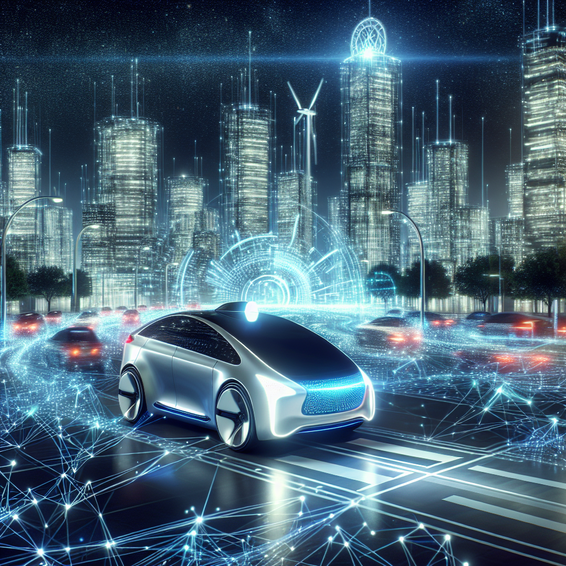The advent of Tesla’s robotaxi platform is more than just another milestone in autonomous driving—it’s a seismic shift in how digital infrastructure, artificial intelligence, and the broader transportation ecosystem converge. With billions invested and the eyes of both the tech and automotive industries firmly fixed on Tesla’s forthcoming robotaxi, the stage is set for a moment that could define the trajectory of autonomous mobility around the world.
The High Stakes of Tesla’s Robotaxi Reveal
Tesla’s Robotaxi Could Self-Drive Your Faith in Autonomous Cars Right Off a Cliff (Gizmodo & LinkedIn): Tesla’s much-anticipated robotaxi launch is being hailed as a turning point for autonomous vehicles. This launch carries the double-edged potential to either fulfill the company’s bold self-driving promises—or damage public trust in robotaxis if expectations are not met. Billions of dollars and the credibility of the entire self-driving sector hinge on Tesla’s ability to deliver a safe, reliable, and innovative experience for urban travelers.
Read more on Gizmodo
Waymo shows how radar and lidar help its robotaxis see what cameras can’t (Business Insider): While Tesla pushes camera-centered approaches, competitors like Waymo demonstrate the power of sensor fusion for robotaxis. In recent demonstrations, Waymo’s robotaxis utilized radar and lidar to detect pedestrians that were completely out of sight for camera-only systems. This multi-layered, AI-driven perception creates significant safety advantages, highlighting a core technology divide within the industry.
Read more at Business Insider
Local lawmakers are trying to delay Tesla’s robotaxi launch in Austin (KXAN): The rollout of revolutionary technology doesn’t happen in a vacuum. Austin lawmakers have urged Tesla to pause its robotaxi launch until new autonomous vehicle regulations take effect in September 2025, reflecting growing demands for strong governance and public safety measures alongside rapid digital innovation.
Read the full story at KXAN
Analysis: What Does This Mean for Organizations and the IT Industry?
The intersection of AI-driven robotaxis and digital infrastructure is creating ripple effects across industries:
- Data Infrastructure: Robotaxis generate massive real-time data, requiring advanced cloud infrastructure and robust edge computing for processing.
- Public Safety & Compliance: The evolution of regulations (like in Austin) underscores the need for continuous compliance and rapid adaptation from IT and mobility partners.
- AI Innovation: Advancements, such as Waymo’s sensor suite, set new benchmarks for perception and safety, driving cross-industry innovation in real-time data analytics and machine learning deployment.
- Trust & Adoption: The industry’s reputation is on the line; public setbacks or safety incidents could impact broad adoption of digital and autonomous solutions in cities worldwide.
For deeper insights into AI business impact and the future of autonomous transportation, see our previous post Tesla Robotaxis: The Future of Autonomous Transportation.
Recommendations for IT Leaders: Mitigating Risk, Enhancing Efficiency, and Saving Costs
With this paradigm shift, IT professionals, architects, and business leaders should take the following actions:
- Prioritize Regulatory Readiness: Build compliance into deployment roadmaps, keeping agile for rapid law and policy changes across jurisdictions.
- Leverage Sensor Data Fusion: Integrate multi-modal sensor data (camera, lidar, radar) for robust AI decision-making and anomaly detection—this not only boosts safety but futureproofs your infrastructure.
- Invest in Edge AI and Cloud Infrastructure: Deploy edge compute layers for real-time analysis and secure transmissions, reducing latency and improving reliability.
- Harden Digital Systems: Adopt zero trust architecture, enforce strong passkey and 2FA policies for all AI-driven operational access, and conduct regular penetration testing to minimize cybersecurity risks.
- Adopt Mature Incident Response and Monitoring Solutions: Integrate best-in-class observability and monitoring tools for quick detection, investigation, and response to anomalies or cybersecurity threats. See Introducing Monitoring and Observability in the Enterprise for more.
Best Solutions for Future-Ready Operations: Explore cloud-native AI platforms, enterprise-grade IoT edge solutions, and advanced multi-factor access management as foundational investments for organizations navigating the robotaxi age.
Conclusion: The Road Ahead for Tesla Robotaxis and IT Strategy
The robotaxi revolution is more than a technological upgrade; it’s a demonstration of how AI, digital infrastructure, regulations, and public trust must evolve in concert. As Tesla moves forward and competitors innovate, organizations and IT leaders who proactively adapt, prioritize safety, and build resilient, scalable architectures will not only navigate change—they’ll help shape the future of urban mobility.
